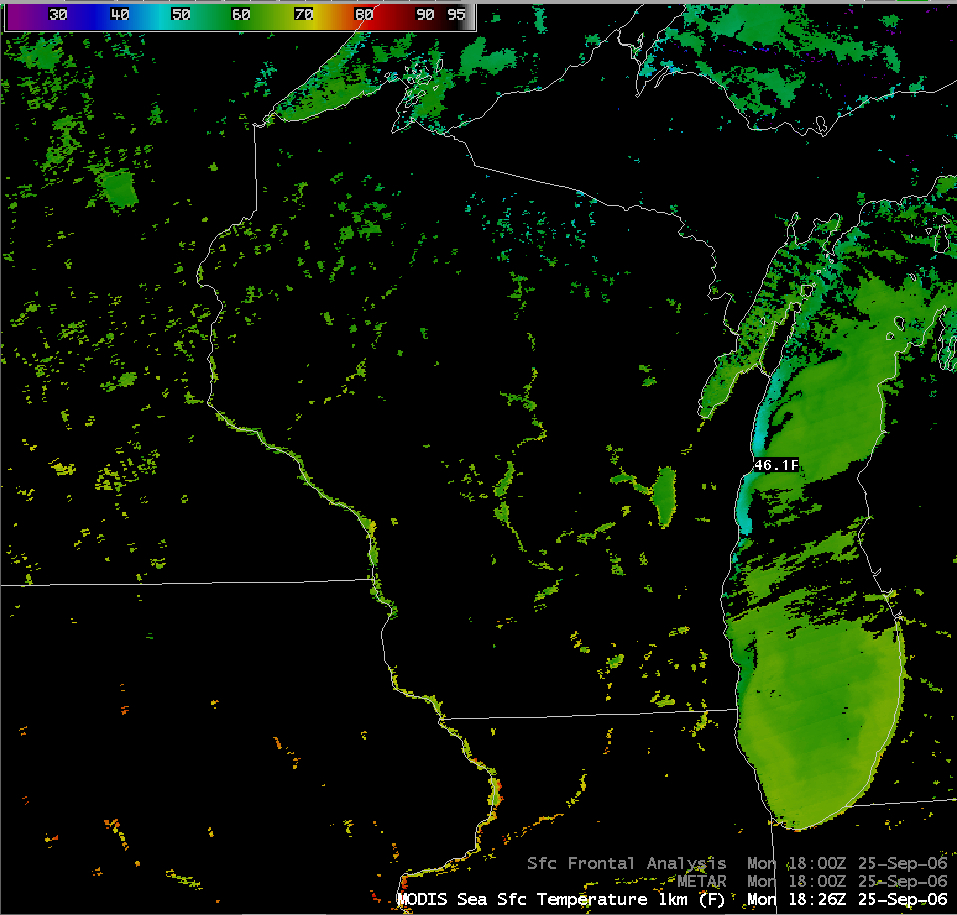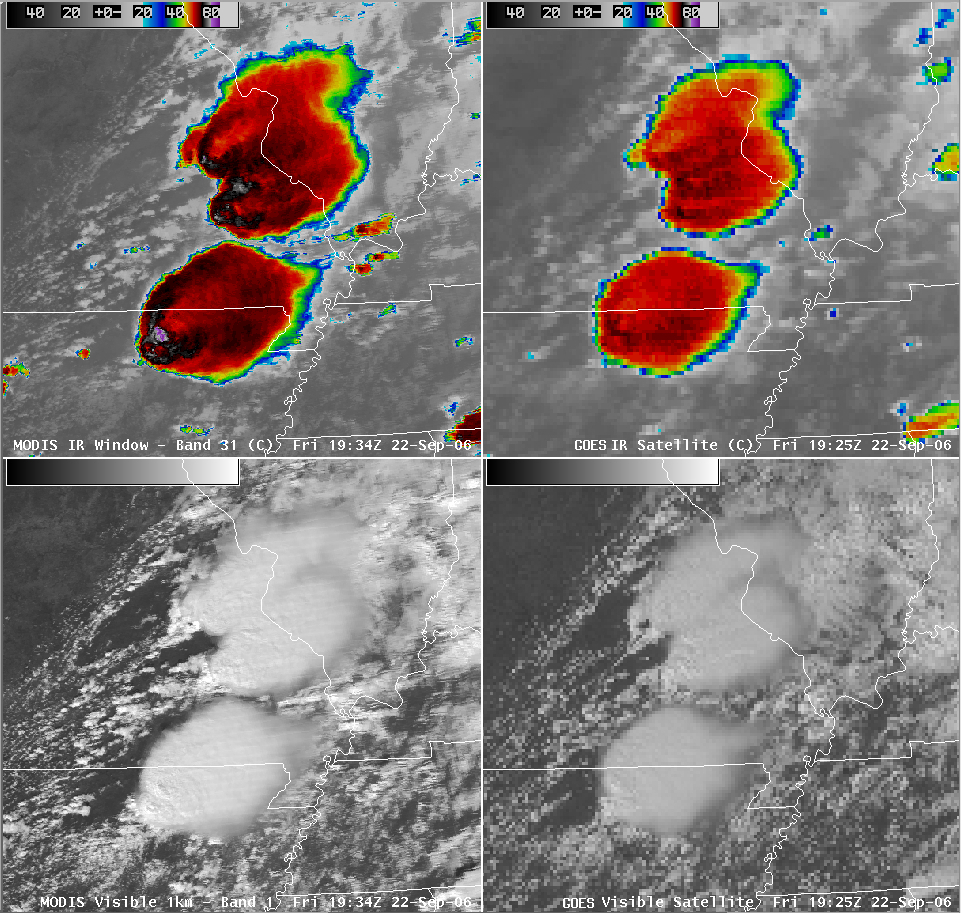Westerly winds during the past 2 days (in the wake of a cold frontal passage) have helped to intensify the upwelling of cooler water along the Wisconsin shore of Lake Michigan. The 1-km resolution AWIPS MODIS Sea Surface Temperature product (above) indicated water as cold as 46.1 F (7.8 C) near Sheboygan, Wisconsin (compared to water temperatures of 60-65 F [15-18 C] in central portions of Lake Michigan). This upwelling was also evident on the 4-km resolution GOES-12 10.7 µm IR channel data, which showed brightness temperatures as cold as 46.4 F (8 C) in that same region. Areas of upwelling bring cooler, nutrient-rich water to the surface, which enhances the growth of photosynthetic algae (as seen by the blue-green hues in the corresponding MODIS true color image).
And while we’re on the topic of cold water…check out the evolution of the intricate structure of the marine layer stratocumulus clouds over the California Current (large-scale animation | close-up animation)!
View only this post Read Less






